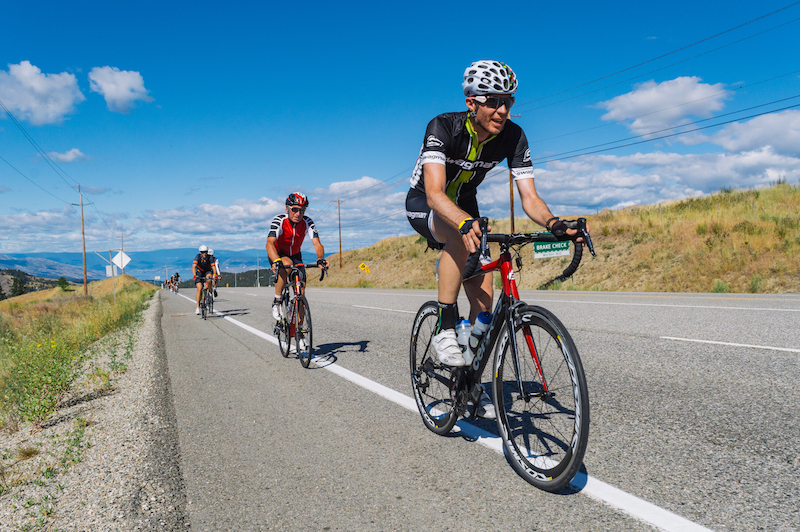L'Alpe de Grand Blanc: Race training tips
With a week to go until L'Alpe de Grand Blanc, guest blogger Chris Collins from Okanagan Peak Performance gives us his best race training tips. And after doing the Axel Merckx Gran Fondo on July 8, he has great advice for every cyclist.
Every time I complete a race, I learn some things. Competition is a greater teacher than training ever will be. So with that in mind, I wanted to share some of the lessons from the fondo.
Lesson #1 – Rest is a Weapon
This year, I was about 20 minutes faster with less training. One of the things I changed up this year was really dialing back the training in the week before the event. I put an emphasis on my sleep and borrowed some air compression sleeves from a friend.
My legs felt great during the race and my fitness was where it needed to be to set a PB.
Lesson #2 – Don’t Wait to Fuel
Often, cramping is a result of dehydration or a poor fueling strategy. With that in mind, no one that cramps should ever have hydration or nutrition left at the finish line. Having leftover fluids or food means that the athlete didn’t eat or drink. Or they waited until it was too late and the damage was done.
When you compete, you need to eat and drink on the clock. For the L’Alpe de Grand Blanc, riders will be on the course for at least two hours. With enough stored energy to allow the average competitor to push intensely for about an hour, this means everyone will need hydration and fuel at some point.
At the one hour mark, make sure you have a bottle of your favourite drink and something to eat.

The uphill climb
Lesson #3 – Body Position
Last week, all the major bike brands introduced their new bikes at the Tour de France. And while much was being made about aero frames, wheels and geometries, body position on the bike can save more seconds than technology can.
Are you aware of your body position? Are you low or too upright? Are your elbows tucked in or flared? Is your head in a neutral or extended position?
Take some pictures of yourself on the bike to see what your body position looks like. Get a friend to take pictures of you from all angles to get a true read.
Lesson #4 – Shoot for a Negative Split
What this means is to be stronger on the second half of the race. You’ll have an idea of where you need to be for the first half of the race. Then do a quick self-check at the half way point. How is the body feeling? How are the lungs? How are the legs? What is your motivation to dig deep on the second half?
When you approach the race this way it gives you options strategy-wise for the finish. It’s hard to control the weather. Will the wind pick up? Will it rain? How much will the temperature climb? The other alternative is to take out from the start and go for it. This can be tough, especially if you don’t have other riders for support.
Lesson #5 – Carry Momentum Over the Top
This tip was shared with me by a client, Baili Guidi. Baili is a top rider and had a great race on the weekend winning the King of the Mountain. Knowing he’s really strong on the hills, I asked him for some advice.
His tip was to build momentum near the top of the climb and carry it over the top. Often, a climb is followed by a false flat or maybe even a descent. Experienced riders will know to carry as much speed as the grade lessens in the hopes of opening a gap on those following.
As you enter the last week before the race look apply the lessons above to help you have the best ride possible on August 22.
Chris Collins established Okanagan Peak Performance to enhance both the enjoyment and performance of athletes in sport. Today, Okanagan Peak Performance is the resource for athletic conditioning and education.